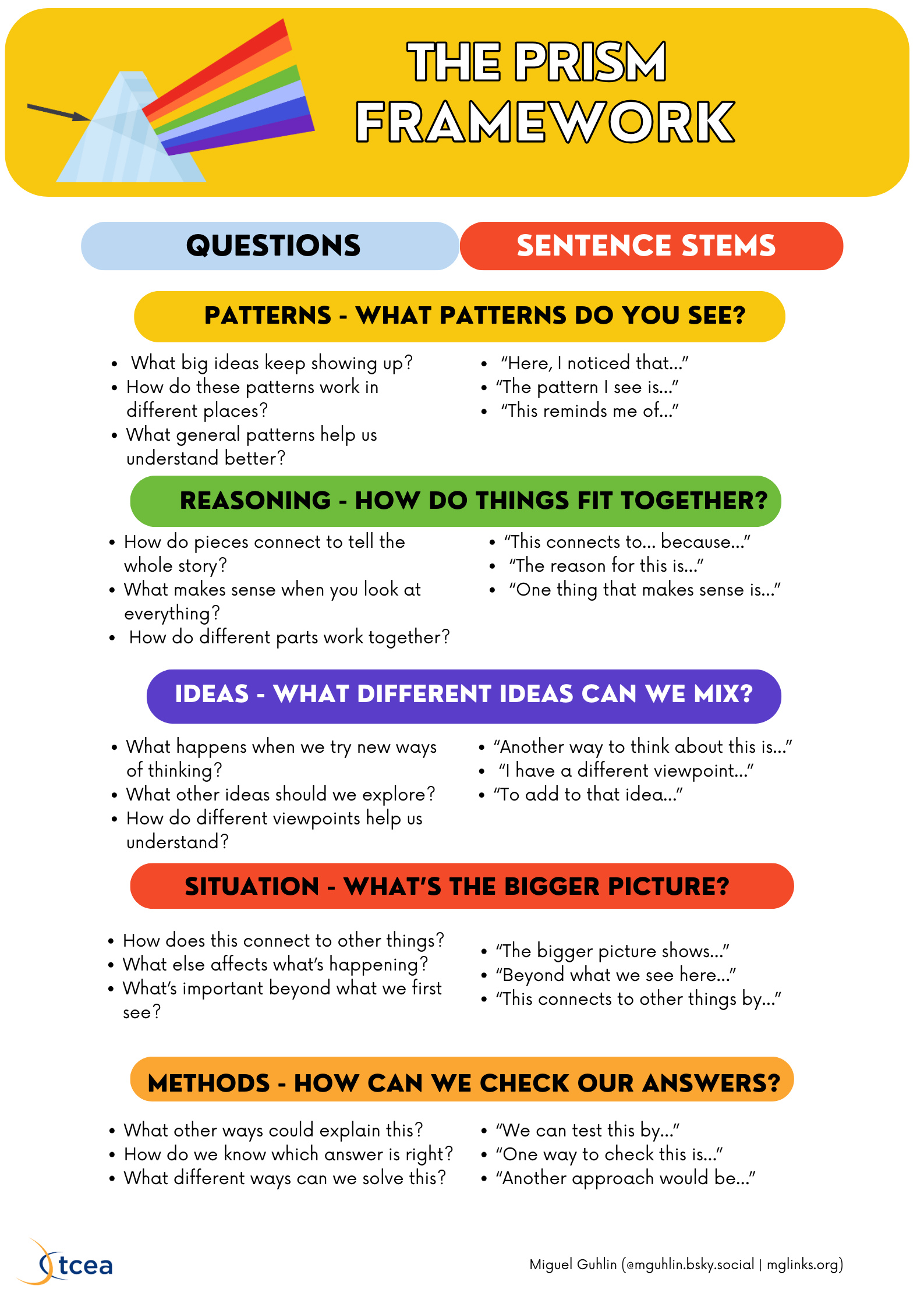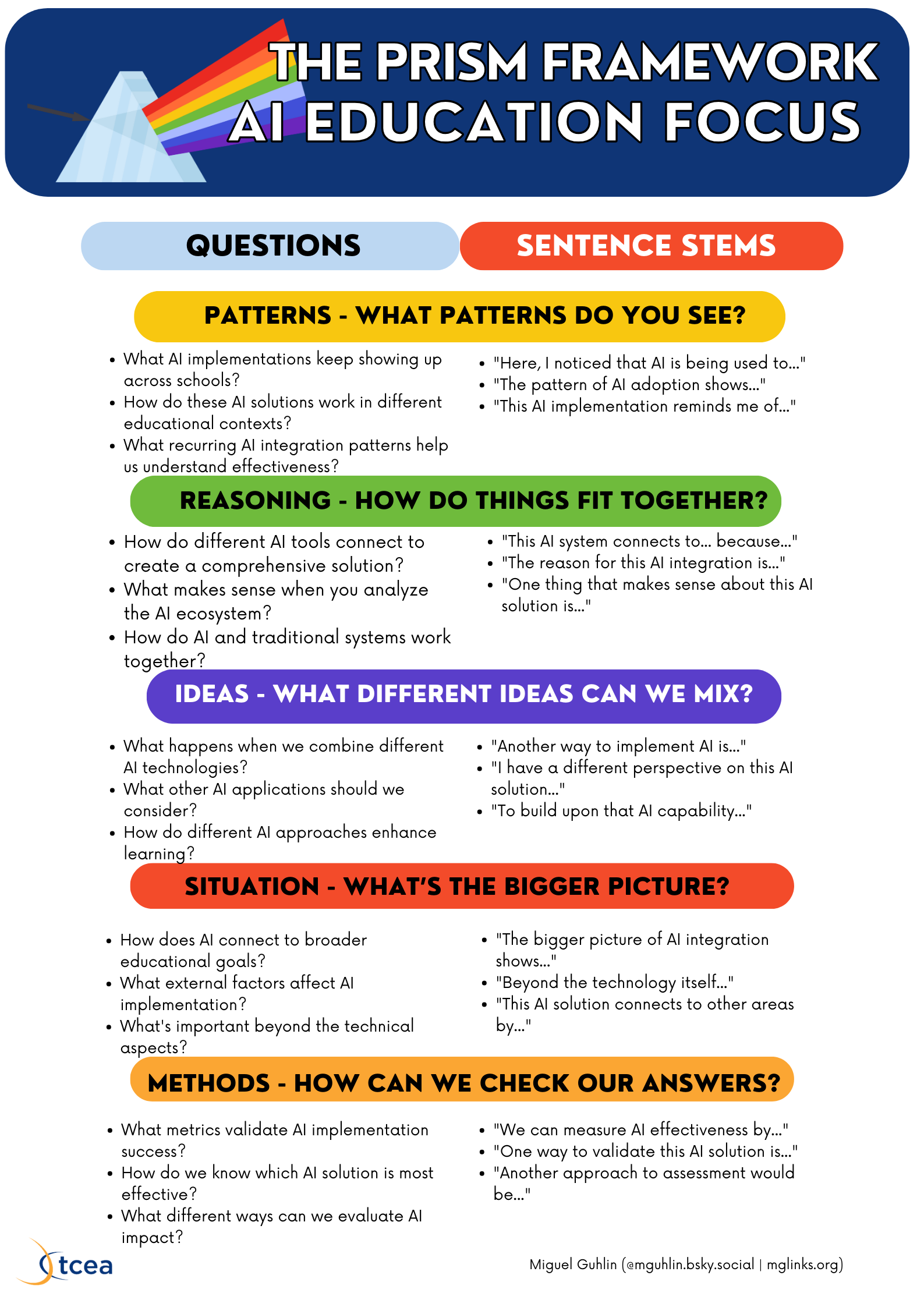Introducing the PRISM Framework #EduSky #edtech #SOLO
Transform surface learning into deep understanding using patterns, reasoning, ideas, situation, and methods with the PRISM framework!
What if you could use an acronym to spur student thinking to move beyond surface learning to transfer learning? Teachers are student learning watchers. You are eager to see the lightbulb go off in students’ heads. As a teacher, I feel like person waiting for the chick in the egg break out of its shell. I want to help without taking away the productive struggle. What if we could give students the tools they need to move from simple to complex thinking? What if we could make this process a little more obvious for students? That’s the purpose of the PRISM Framework (see the handy infographic below).

Discover the latest in ed tech, teaching strategies, and digital learning from TCEA.
The post PRISM: See Thinking in a New Light appeared first on TCEA TechNotes Blog.
Geoff Petty’s explanation of the SOLO Taxonomy in his book, Evidence-Based Teaching, got me thinking hard. As I read his explanation of the SOLO Taxonomy, I started to wonder, could a model of the SOLO Taxonomy be constructed to aid my own progress from simple to complex levels? I was looking for a way to accelerate my understanding on diverse topics. Of course, I realize now that this is a lot like most processes work, including science, which I realized last week while taking notes on an upcoming online course from TCEA focused on science education in Texas. Dr. Vic, the course developer, highlights this process…here are my notes:
- Observe. Make observations, including what I see in Natures, my own experience, thoughts, or reading -** Question.** Generate and ponder questions about recurring patterns in my observations (this is super hard without AI)
- Hypothesize. Come up with ideas or possible explanations about why something is happening or what I’m thinking. It’s a little metacognitive, right?
- Test. This is where you test your explanations (a.k.a. hypotheses) and see if you can make predictions based on your hypothesis. If you can, you may have something that needs even more testing. The idea, to borrow Melanie Trecek King’s wording, is to engage in systematic disconfirmation…to prove our explanations wrong, trying to find one that DOES work and allow us to predict.
- Research. Gather more data to test hypotheses and predictions resulting from those explanations. This can include pulling data from existing research, making our own observations, conducting experiments, and replicating them to to see if others can get the same results.
- Theorize. Come up with a theory for what’s happening that is supported by data and consistent with what other theories say.
You can easily see how PRISM reflects that. You observe Patterns, you ask questions and Reason how things fit together. You see what Ideas there are out there, reconciling perspectives or not. Then you step back even further to see the big picture, what the Situation is. Then you test what you’ve come up with via various Methods. The main benefit is the sentence stems.
You may be thinking, as I am right now as I type this, “Why is PRISM necessary?” We already have all these processes. Well, one reason may be that the other ones I encountered didn’t stick. Or, it could be what Dr. Judi Harris said so long ago (paraphrase coming up): By reinventing ideas, we make them our own. And that’s not bad since it may help me remember a process, any process, when I most need it.
Lazy Brain
In all honesty, most of us don’t do this, right? I read (Daniel T. Willingham’s Why Don’t Students Like School? Because the Mind Is Not Designed for Thinking ) that we rely on memory rather than thinking because it’s easier and human brains are lazy. PRISM is meant to scaffold thinking, helping us ask questions.
Since using AI can support thinking, it didn’t take me long using AI LLMs like Perplexity AI, ChatGPT as a thought partner and rapid prototyping, then Napkin AI as an artifact developer.
Productive Struggle
Here’s a quick application of PRISM Framework to AI in Education…

All this got me thinking about AI in education, and I think I see a way to blend AI into education that should satisfy AI critics. But that’s another blog entry due out next week. :-)